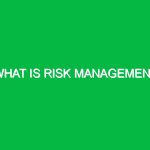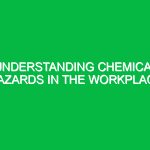In the realm of Health, Safety, and Environment (HSE), hazard signs serve as critical tools. They communicate essential information about potential risks, guiding individuals to navigate environments safely. Hazard signs are not just simple symbols; they embody the principles of safety and risk management. They remind us to remain vigilant, fostering a culture of awareness that is essential in workplaces and public spaces alike.
What is a Hazard Sign?
A hazard sign is a visual cue designed to alert individuals to potential dangers in their surroundings. Typically displayed as a symbol or an image, these signs can indicate various hazards, from chemical exposure to electrical risks. They play an invaluable role in preventing accidents, injuries, and even fatalities by conveying vital information quickly and effectively. Hazard signs are governed by the principles of clarity and visibility. For instance, a bright yellow sign with a black exclamation mark warns of general hazards, while a red sign with a white skull and crossbones indicates toxic substances. The use of standardized symbols ensures that messages are universally understood, transcending language barriers.
The Importance of Hazard Signs in HSE
In industries ranging from construction to healthcare, hazard signs are integral to maintaining safety. They serve as a first line of defense against accidents. According to the Occupational Safety and Health Administration (OSHA), proper labeling and signage can significantly reduce workplace accidents. In fact, a study conducted by the National Safety Council showed that clear hazard communication can decrease injury rates by as much as 30%. Consider a construction site, bustling with activity. Workers are often surrounded by heavy machinery, power tools, and hazardous materials. In such environments, hazard signs are crucial. A sign warning of overhead loads can prevent injuries resulting from falling objects. Similarly, a sign indicating a confined space can remind workers to take necessary precautions before entering. These signs not only protect the workforce but also enhance overall productivity by minimizing disruptions caused by accidents.
Types of Hazard Signs
Hazard signs can be categorized based on the types of risks they indicate. Here’s a closer look at some common categories:
1. Chemical Hazard Signs
These signs alert individuals to the presence of hazardous chemicals. They often display symbols like the skull and crossbones for toxic substances or the flame symbol for flammable materials. For instance, in a laboratory setting, a sign indicating “Corrosive” with an image of a chemical burning through metal is essential to prevent accidental exposure.
2. Biological Hazard Signs
Biological hazard signs indicate the presence of biological agents that could pose health risks, such as bacteria or viruses. A common example is the biohazard symbol, often seen in medical facilities. This sign reminds personnel to exercise caution when handling potentially infectious materials.
3. Electrical Hazard Signs
Electrical hazard signs warn of potential electrical risks, including shock or electrocution. A symbol depicting a lightning bolt is typically used to indicate high voltage areas. For example, in a power plant, these signs are crucial to ensure that workers maintain a safe distance from live wires.
4. Physical Hazard Signs
These signs alert individuals to physical dangers such as slippery surfaces or falling objects. A sign reading “Wet Floor” is a common sight in public buildings, serving to prevent slips and falls. Similarly, a sign indicating “Hard Hat Area” is essential on construction sites to protect workers from head injuries.
Identifying Risks Associated with Hazard Signs
While hazard signs are designed to mitigate risks, it’s important to understand the underlying hazards they represent. Ignoring these signs can lead to serious consequences. Here are some potential hazards associated with various types of signs:
Chemical Hazards
Exposure to chemicals can lead to severe health issues, including respiratory problems, skin irritation, or long-term illnesses such as cancer. For instance, a laboratory worker who disregards a chemical hazard sign may accidentally spill a corrosive substance, resulting in burns or inhalation injuries.
Biological Hazards
Biological hazards pose risks that can result in infections or diseases. For instance, in a medical laboratory, a technician might encounter blood samples that carry viruses. Failing to recognize a biological hazard sign could lead to serious health implications, affecting both the individual and the broader community.
Electrical Hazards
Electrical hazards can cause severe injuries or fatalities due to shock or burns. An electrician working on a live circuit without acknowledging electrical hazard signs risks electrocution. Awareness of these signs is vital for ensuring that proper safety protocols are followed.
Physical Hazards
Physical hazards often lead to slips, trips, and falls, which are among the most common workplace injuries. A worker ignoring a “Caution: Slippery Floor” sign may easily lose their footing, resulting in injuries that could have been easily avoided.
Safety Precautions and Best Practices
To enhance safety in environments marked by hazard signs, individuals must adopt specific precautions and best practices. Here are actionable guidelines to follow:
1. Training and Awareness
Understanding the meaning of hazard signs is paramount. Employers should provide comprehensive training for employees, ensuring they can identify and interpret these signs correctly. Regular safety meetings can reinforce this knowledge and promote a culture of safety.
2. Regular Inspections
Conducting regular safety inspections of the workplace can help identify any missing or damaged hazard signs. Employers should ensure that all signs are visible, legible, and maintained in good condition. A faded or obscured sign can lead to misunderstandings and increased risks.
3. Personal Protective Equipment (PPE)
In environments where hazard signs are present, wearing appropriate PPE is essential. For instance, in a laboratory where chemical hazards are indicated, gloves, goggles, and lab coats should be mandatory. PPE serves as an additional layer of protection against potential risks.
4. Reporting Hazards
Employees should be encouraged to report any observed hazards or issues related to hazard signs. A proactive approach can help prevent accidents and foster a safe working environment. Implementing a reporting system can streamline this process and ensure that concerns are addressed promptly.
Regulations and Standards Governing Hazard Signs
Various regulations and standards govern the use of hazard signs to ensure safety across different industries. Here are some key regulations:
1. OSHA Standards
The Occupational Safety and Health Administration (OSHA) outlines specific requirements for hazard communication. OSHA mandates that employers must provide information about hazardous chemicals through labels, safety data sheets, and proper signage.
2. ANSI Standards
The American National Standards Institute (ANSI) sets forth standards for safety signs and symbols. ANSI Z535 is a series of standards that provides guidelines for the design and use of safety signs, ensuring that they convey information effectively and clearly.
3. Globally Harmonized System (GHS)
The Globally Harmonized System (GHS) provides a consistent approach to hazard communication internationally. It emphasizes the importance of clear labeling and standardized symbols for hazardous materials, facilitating better understanding across borders.
Conclusion
Hazard signs are more than just visual markers; they are essential components of a safety culture in various environments. By understanding the significance of these signs, identifying associated risks, and adhering to safety precautions, individuals can contribute to a safer workplace and community. As we navigate our daily lives, let us remain vigilant and respect the information conveyed by hazard signs, ensuring that safety remains a priority. Through education, awareness, and adherence to regulations, we can effectively minimize risks and protect ourselves and those around us.


